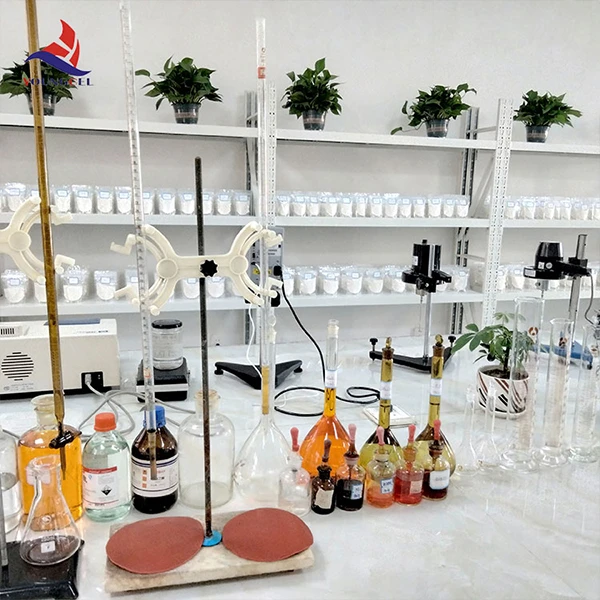The Significance of Construction Gypsum Powder in Modern Building Practices
Construction gypsum powder, commonly known as gypsum plaster or drywall compound, plays a pivotal role in the construction industry. It is mainly derived from the mineral gypsum, which is found in nature and is primarily composed of calcium sulfate dihydrate (CaSO₄·2H₂O). This article explores the properties, applications, and benefits of gypsum powder in modern construction practices.
Properties of Gypsum Powder
Gypsum powder possesses unique properties that make it an ideal material for various applications in construction. Firstly, it is lightweight, which reduces the overall load on a building’s structure. This feature not only facilitates easier handling and installation but also contributes to the energy efficiency of structures.
Moreover, gypsum has excellent fire-resistant properties due to its ability to release water vapor when heated. This quality is particularly significant in enhancing the safety of buildings, as it helps to slow down the spread of flames and provide additional escape time during a fire incident. Furthermore, gypsum is non-combustible and emits no toxic fumes, making it a safer choice compared to other materials like plywood or laminated products.
Applications of Gypsum Powder
Gypsum powder is utilized in various applications within the construction sector. One of its most common uses is in the production of drywall, which serves as an effective wall and ceiling covering. Drywall is easy to install and finish, making it a popular choice for both residential and commercial projects.
Additionally, gypsum powder is used in making plastering materials. When mixed with water, it forms a smooth paste that can be applied to walls and ceilings to create a polished finish. This plaster not only enhances the aesthetic appeal of interiors but also improves the durability of the surfaces, protecting them from moisture and damage.
Another significant application of gypsum powder is in the manufacturing of cement. When added to cement, gypsum helps control the setting time, improving workability and ensuring a smooth finish. This synergy between gypsum and cement is vital to achieving high-quality construction outcomes.
construction gypsum powder

Environmental Benefits
In recent years, the environmental impact of construction materials has gained increasing attention. Gypsum powder is considered an eco-friendly option for various reasons. It is primarily composed of natural materials and is recyclable. Reclaimed gypsum can be reprocessed and reused, which significantly reduces waste in landfills.
Additionally, the production of gypsum products requires less energy compared to traditional construction materials. This lower energy footprint contributes to reduced greenhouse gas emissions, making gypsum a more sustainable choice in the quest for greener building practices.
Challenges and Considerations
While construction gypsum powder offers numerous advantages, it is essential to be aware of certain challenges. Gypsum, when exposed to high moisture levels, can be susceptible to mold and deterioration. Therefore, proper installation and waterproofing techniques must be implemented to mitigate these risks.
Moreover, the sourcing of gypsum must be managed sustainably to prevent over-extraction from natural deposits. Ensuring responsible mining practices and exploring alternative sources of gypsum, such as industrial by-products, can help balance supply with environmental stewardship.
Conclusion
In conclusion, construction gypsum powder is an invaluable material in the modern building landscape. Its unique properties, versatile applications, and environmental benefits make it a preferred choice among architects, builders, and homeowners alike. As the construction industry continues to evolve and adapt to the challenges of sustainability and safety, gypsum powder is likely to remain at the forefront, contributing to the development of resilient and efficient structures for the future. Its prominence in a wide range of construction applications underscores the necessity for continued innovation and research within this essential material category.
-
A Comprehensive Guide to Methyl Ethyl Hydroxyethyl Cellulose: Applications and Industry InsightsNewsNov.24,2025
-
Understanding Methyl 2 Hydroxyethyl Cellulose: Uses, Benefits & Industry InsightsNewsNov.24,2025
-
Hydroxyethyl Methyl Cellulose HEMC: Industrial Uses, Benefits & Future TrendsNewsNov.23,2025
-
HEMC Cellulose: Versatile & Sustainable Industrial Polymer | YoungcelNewsNov.23,2025
-
Methyl Hydroxyethyl Cellulose: Versatile Building Block for Industry & SustainabilityNewsNov.23,2025
-
CAS 9032 42 2: Understanding Polyvinyl Alcohol's Impact on Industry & SustainabilityNewsNov.22,2025




